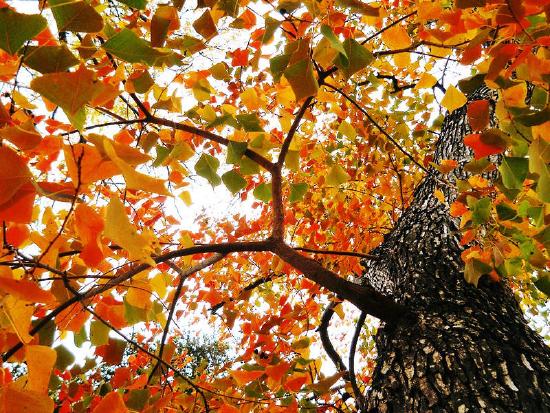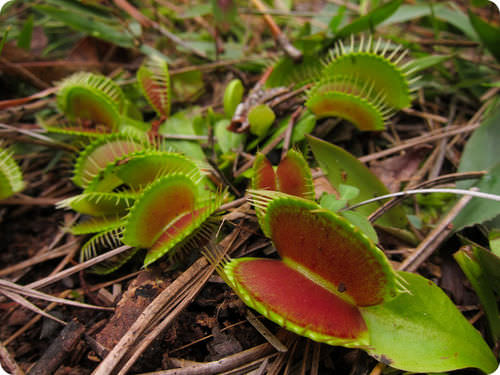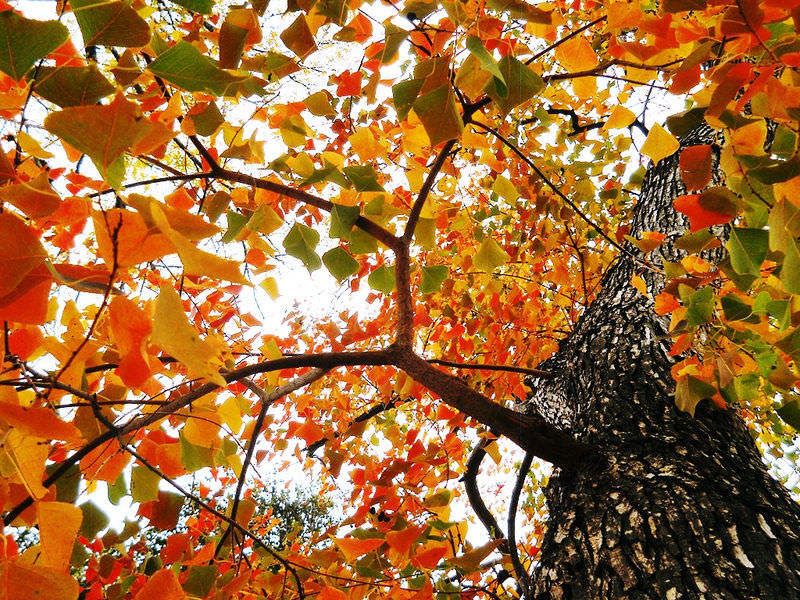9.11: Plant Characteristics
- Page ID
- 1493
\( \newcommand{\vecs}[1]{\overset { \scriptstyle \rightharpoonup} {\mathbf{#1}} } \)
\( \newcommand{\vecd}[1]{\overset{-\!-\!\rightharpoonup}{\vphantom{a}\smash {#1}}} \)
\( \newcommand{\id}{\mathrm{id}}\) \( \newcommand{\Span}{\mathrm{span}}\)
( \newcommand{\kernel}{\mathrm{null}\,}\) \( \newcommand{\range}{\mathrm{range}\,}\)
\( \newcommand{\RealPart}{\mathrm{Re}}\) \( \newcommand{\ImaginaryPart}{\mathrm{Im}}\)
\( \newcommand{\Argument}{\mathrm{Arg}}\) \( \newcommand{\norm}[1]{\| #1 \|}\)
\( \newcommand{\inner}[2]{\langle #1, #2 \rangle}\)
\( \newcommand{\Span}{\mathrm{span}}\)
\( \newcommand{\id}{\mathrm{id}}\)
\( \newcommand{\Span}{\mathrm{span}}\)
\( \newcommand{\kernel}{\mathrm{null}\,}\)
\( \newcommand{\range}{\mathrm{range}\,}\)
\( \newcommand{\RealPart}{\mathrm{Re}}\)
\( \newcommand{\ImaginaryPart}{\mathrm{Im}}\)
\( \newcommand{\Argument}{\mathrm{Arg}}\)
\( \newcommand{\norm}[1]{\| #1 \|}\)
\( \newcommand{\inner}[2]{\langle #1, #2 \rangle}\)
\( \newcommand{\Span}{\mathrm{span}}\) \( \newcommand{\AA}{\unicode[.8,0]{x212B}}\)
\( \newcommand{\vectorA}[1]{\vec{#1}} % arrow\)
\( \newcommand{\vectorAt}[1]{\vec{\text{#1}}} % arrow\)
\( \newcommand{\vectorB}[1]{\overset { \scriptstyle \rightharpoonup} {\mathbf{#1}} } \)
\( \newcommand{\vectorC}[1]{\textbf{#1}} \)
\( \newcommand{\vectorD}[1]{\overrightarrow{#1}} \)
\( \newcommand{\vectorDt}[1]{\overrightarrow{\text{#1}}} \)
\( \newcommand{\vectE}[1]{\overset{-\!-\!\rightharpoonup}{\vphantom{a}\smash{\mathbf {#1}}}} \)
\( \newcommand{\vecs}[1]{\overset { \scriptstyle \rightharpoonup} {\mathbf{#1}} } \)
\( \newcommand{\vecd}[1]{\overset{-\!-\!\rightharpoonup}{\vphantom{a}\smash {#1}}} \)
\(\newcommand{\avec}{\mathbf a}\) \(\newcommand{\bvec}{\mathbf b}\) \(\newcommand{\cvec}{\mathbf c}\) \(\newcommand{\dvec}{\mathbf d}\) \(\newcommand{\dtil}{\widetilde{\mathbf d}}\) \(\newcommand{\evec}{\mathbf e}\) \(\newcommand{\fvec}{\mathbf f}\) \(\newcommand{\nvec}{\mathbf n}\) \(\newcommand{\pvec}{\mathbf p}\) \(\newcommand{\qvec}{\mathbf q}\) \(\newcommand{\svec}{\mathbf s}\) \(\newcommand{\tvec}{\mathbf t}\) \(\newcommand{\uvec}{\mathbf u}\) \(\newcommand{\vvec}{\mathbf v}\) \(\newcommand{\wvec}{\mathbf w}\) \(\newcommand{\xvec}{\mathbf x}\) \(\newcommand{\yvec}{\mathbf y}\) \(\newcommand{\zvec}{\mathbf z}\) \(\newcommand{\rvec}{\mathbf r}\) \(\newcommand{\mvec}{\mathbf m}\) \(\newcommand{\zerovec}{\mathbf 0}\) \(\newcommand{\onevec}{\mathbf 1}\) \(\newcommand{\real}{\mathbb R}\) \(\newcommand{\twovec}[2]{\left[\begin{array}{r}#1 \\ #2 \end{array}\right]}\) \(\newcommand{\ctwovec}[2]{\left[\begin{array}{c}#1 \\ #2 \end{array}\right]}\) \(\newcommand{\threevec}[3]{\left[\begin{array}{r}#1 \\ #2 \\ #3 \end{array}\right]}\) \(\newcommand{\cthreevec}[3]{\left[\begin{array}{c}#1 \\ #2 \\ #3 \end{array}\right]}\) \(\newcommand{\fourvec}[4]{\left[\begin{array}{r}#1 \\ #2 \\ #3 \\ #4 \end{array}\right]}\) \(\newcommand{\cfourvec}[4]{\left[\begin{array}{c}#1 \\ #2 \\ #3 \\ #4 \end{array}\right]}\) \(\newcommand{\fivevec}[5]{\left[\begin{array}{r}#1 \\ #2 \\ #3 \\ #4 \\ #5 \\ \end{array}\right]}\) \(\newcommand{\cfivevec}[5]{\left[\begin{array}{c}#1 \\ #2 \\ #3 \\ #4 \\ #5 \\ \end{array}\right]}\) \(\newcommand{\mattwo}[4]{\left[\begin{array}{rr}#1 \amp #2 \\ #3 \amp #4 \\ \end{array}\right]}\) \(\newcommand{\laspan}[1]{\text{Span}\{#1\}}\) \(\newcommand{\bcal}{\cal B}\) \(\newcommand{\ccal}{\cal C}\) \(\newcommand{\scal}{\cal S}\) \(\newcommand{\wcal}{\cal W}\) \(\newcommand{\ecal}{\cal E}\) \(\newcommand{\coords}[2]{\left\{#1\right\}_{#2}}\) \(\newcommand{\gray}[1]{\color{gray}{#1}}\) \(\newcommand{\lgray}[1]{\color{lightgray}{#1}}\) \(\newcommand{\rank}{\operatorname{rank}}\) \(\newcommand{\row}{\text{Row}}\) \(\newcommand{\col}{\text{Col}}\) \(\renewcommand{\row}{\text{Row}}\) \(\newcommand{\nul}{\text{Nul}}\) \(\newcommand{\var}{\text{Var}}\) \(\newcommand{\corr}{\text{corr}}\) \(\newcommand{\len}[1]{\left|#1\right|}\) \(\newcommand{\bbar}{\overline{\bvec}}\) \(\newcommand{\bhat}{\widehat{\bvec}}\) \(\newcommand{\bperp}{\bvec^\perp}\) \(\newcommand{\xhat}{\widehat{\xvec}}\) \(\newcommand{\vhat}{\widehat{\vvec}}\) \(\newcommand{\uhat}{\widehat{\uvec}}\) \(\newcommand{\what}{\widehat{\wvec}}\) \(\newcommand{\Sighat}{\widehat{\Sigma}}\) \(\newcommand{\lt}{<}\) \(\newcommand{\gt}{>}\) \(\newcommand{\amp}{&}\) \(\definecolor{fillinmathshade}{gray}{0.9}\)
What are plants?
Autumn. A time when leaves turn amazing colors. Of course, leaves are part of plants. But what are plants? What separates a plant from a fungus or protist? Or animal?
Plants
Imagine that human life cycles resembled those of the earliest plants. If you think about this analogy, you may begin to realize that many plants, which appear so inert to our roving eyes and active minds, actually lead secret lives of surprising variety.
You know that humans develop, or gradually change, from infants to quite different, sexually mature adults. You also know that meiosis in your own ovaries or testes produces haploid eggs or sperm, which must join in fertilization to become a new individual. Each of us, of course, began as that single cell made when a sperm united with an egg. Now, through mitosis and the miracle of development, we are made of trillions of cells organized into tissues, organs, and organ systems, which make us complex, amazing, active, individual beings. None of us would doubt that we have changed significantly since we began as single cells. Each of us has a unique identity that we keep throughout our entire lives, until death marks our end. We may give birth to other individuals by producing eggs or sperm, but only if they join with other sperm or eggs to produce new, separate lives.
If, however, we lived like some plants, your father would not have produced the sperm cell destined to provide half of your genes, although there would be such a sperm cell. Your mother would not have produced the egg cell destined to produce the other half. In fact, your parents, and you, would not be distinguishable as male or female. Instead, both parents (or maybe just one parent) would have released thousands of haploid spore cells, each of which would grow, by mitosis, into a new individual being, entirely different in form and habitat from its parents - and you. Small spores would become males, and large spores females, but as if sperm and egg had decided to postpone their “marriage” and grow up on their own, these beings would live very different, “non-human” lives.
Who are these beings? You are certainly not one of them, because you begin only when egg meets sperm. Their differences from you would be far greater than the differences between tadpole and frog, or caterpillar and butterfly, because every individual butterfly or frog could (theoretically) identify exactly which individual caterpillar or tadpole it used to be. Not so with these haploid creatures.
At some time during their relatively long lives, the male and female beings would produce sperm cells and egg cells by mitosis. Fertilization would not involve mating, of course. Depending on which kind of plant we chose as our model, sperm might swim on their own (with two or more flagella) from male to female being, or they might be blown by the wind, or carried by an animal. After sperm and egg join, you would begin your life as a single cell, and grow into an “adult,” eventually producing your own haploid spores. But you would never be able to identify your parents – if indeed you had two – nor would you know your children, because entire haploid lives would separate you. Why do plants lead such complex, multiple lives?
Most of the plants you are probably familiar with produce flowers. However, plants existed for hundreds of millions of years before they evolved flowers. In fact, the earliest plants were different from most modern plants in several important ways. They not only lacked flowers, but also lacked leaves, roots, and stems. You might not even recognize them as plants. So why are the earliest plants placed in the plant kingdom? What traits define a plant?
What are Plants?
Plants are multicellular eukaryotic organisms with cell walls made of cellulose. Plant cells also have chloroplasts. In addition, plants have specialized reproductive organs. These are structures that produce reproductive cells. Male reproductive organs produce sperm, and female reproductive organs produce eggs. Male and female reproductive organs may be on the same or different plants.
How Do Plants Obtain Food?
Almost all plants make food by photosynthesis. Only about 1 percent of the estimated 300,000 species of plants have lost the ability to photosynthesize. These other species are consumers, many of them predators. How do plants prey on other organisms? The Venus fly trap in Figure below shows one way this occurs.
 Venus fly trap plants use their flowers to trap insects. The flowers secrete enzymes that digest the insects, and then they absorb the resulting nutrient molecules.
Venus fly trap plants use their flowers to trap insects. The flowers secrete enzymes that digest the insects, and then they absorb the resulting nutrient molecules.What Do Plants Need?
Plants need temperatures above freezing while they are actively growing and photosynthesizing. They also need sunlight, carbon dioxide, and water for photosynthesis. Like most other organisms, plants need oxygen for cellular respiration and minerals to build proteins and other organic molecules. Most plants support themselves above the ground with stiff stems in order to get light, carbon dioxide, and oxygen. Most plants also grow roots down into the soil to absorb water and minerals. And, of course, we need the energy stored in plants through photosynthesis to survive. Life as we know it would not be possible without plants.
Summary
- Plants are multicellular eukaryotes. They have organelles called chloroplasts and cell walls made of cellulose.
- Plants also have specialized reproductive organs.
- Almost all plants make food by photosynthesis.
- Life as we know it would not be possible without plants.
Review
- What traits do all plants share?
- How do almost all plants obtain food?
- What do plants need? Why do they need these items?
| Image | Reference | Attributions |
 |
[Figure 1] | License: CC BY-NC |
 |
[Figure 2] | Credit: Miguel Vieira Source: www.flickr.com/photos/miguelvieira/6164582612/ License: CC BY 2.0 |

